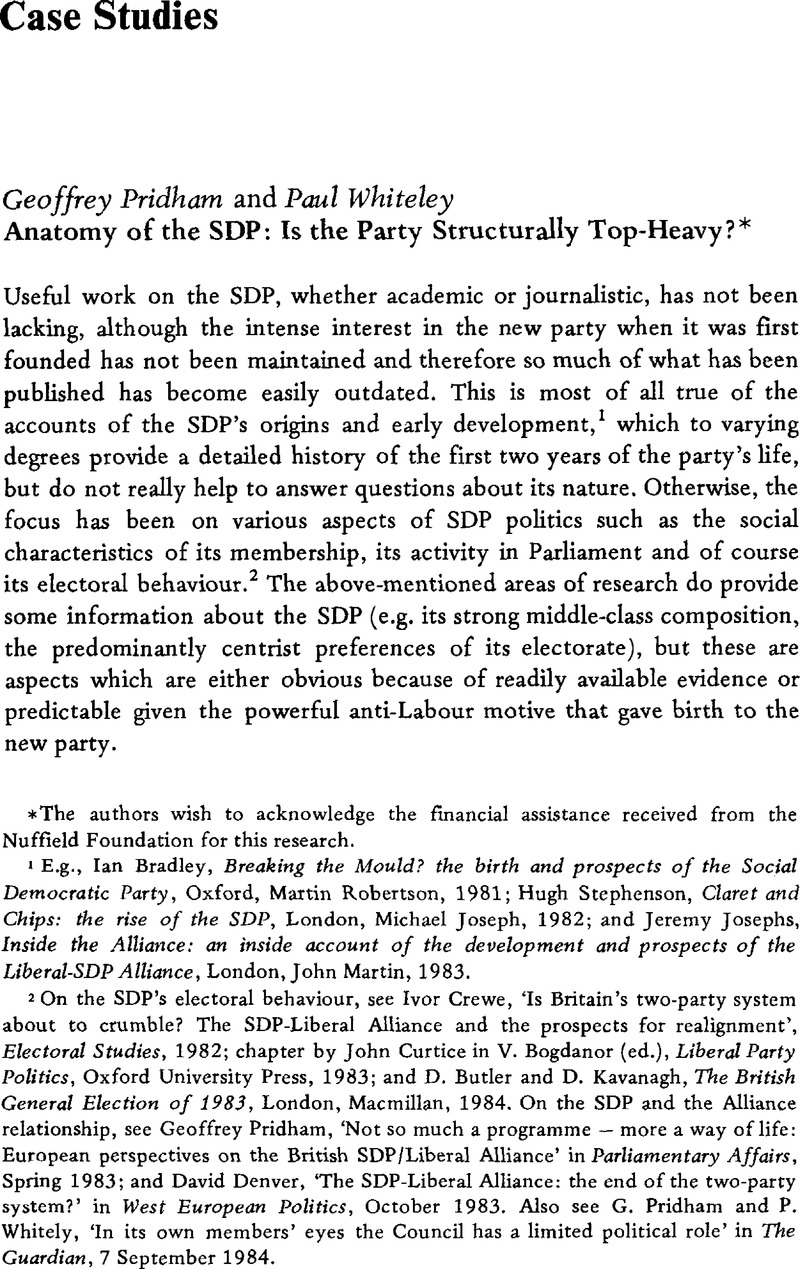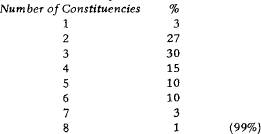Published online by Cambridge University Press: 28 March 2014

1 E.g., Bradley, Ian, Breaking the Mould? the birth and prospects of the Social Democratic Party, Oxford, Martin Robertson, 1981 Google Scholar; Stephenson, Hugh, Claret and Chips: the rise of the SDP, London, Michael Joseph, 1982,Google Scholar; and Josephs, Jeremy, Inside the Alliance: an inside account of the development and prospects of the Liberal‐SDP Alliance, London, John Martin, 1983 Google Scholar.
2 On the SDP’s electoral behaviour, see Crewe, Ivor, ‘Is Britain’s two–party system about to crumble? The SDP–Liberal Alliance and the prospects for realignment’, Electoral Studies, 1982 Google Scholar; chapter by John Curtice in Bogdanor, V. (ed.), Liberal Party Politics, Oxford University Press, 1983 Google Scholar; and Butler, D. and Kavanagh, D., The British General Election of 1983, London, Macmillan, 1984 CrossRefGoogle Scholar. On the SDP and the Alliance relationship, see Pridham, Geoffrey, ‘Not so much a programme — more a way of life: European perspectives on the British SDP/Liberal Alliance’ in Parliamentary Affairs, Spring 1983 Google Scholar; and Denver, David, ‘The SDP‐Liberal Alliance: the end of the two–party system?’ in West European Politics, 10 1983 Google Scholar. Also see Pridham, G. and Whitely, P., ‘In its own members’ eyes the Council has a limited political role’ in The Guardian, 7 09 1984 Google Scholar.
3 Duverger, Maurice, Political Parties: their organisation and activity in the modern state, 3rd edition, 1984, p. xvi Google Scholar.
4 Number of Constituencies in Each Area Party

5 An early survey on SDP membership in its first year showed that 54 per cent lived in residential suburbs, only 14 per cent in inner city areas and 32 per cent in rural areas. (Weekend World, London Weekend Television, 29 November, 1981, SDP Members’ Survey, results analysed by ORC.)
6 The same survey showed that as many as 67 per cent of the SDP membership had not previously been a member of another political party before joining the SDP, and only 28 per cent had (LWT, 29 November 1981).
7 On this, see Pridham, and Whiteley, , The Guardian, 7 09 1984 Google Scholar.
8 For instance, at the January 1985 meeting of the CSD at Birmingham, a constitutional dispute arose over who decides party policy. The issue was a motion calling for a ban on the use of plastic bullets in Northern Ireland pending an inquiry. The Sub‐committee’s apparent rejection of this motion at the party conference the previous September led to accusations of its high‐handedness by the Council, so that Owen felt compelled to intervene and confxm that ‘when there is disagreement between the policy committee and this council, the policy committee is duty‐bound to come back to the council, explain the issues, negotiate with it and try to reach agreement’. (Report in The Times, 28 January 1985.)
9 On the background to this convention see Newby, Richard (party national secretary), ‘Refining the party’s Constitution’, The Social Democrat, 12 04 1985 , pp. 4–5 Google Scholar.
10 Some of the largest area parties, particularly in the ‘Shire Counties’ have now been replaced by smaller area parties, and the organization committee has accepted a number of requests for single constituency area party status. See The Social Democrat, 12 April 1985, p. 4.